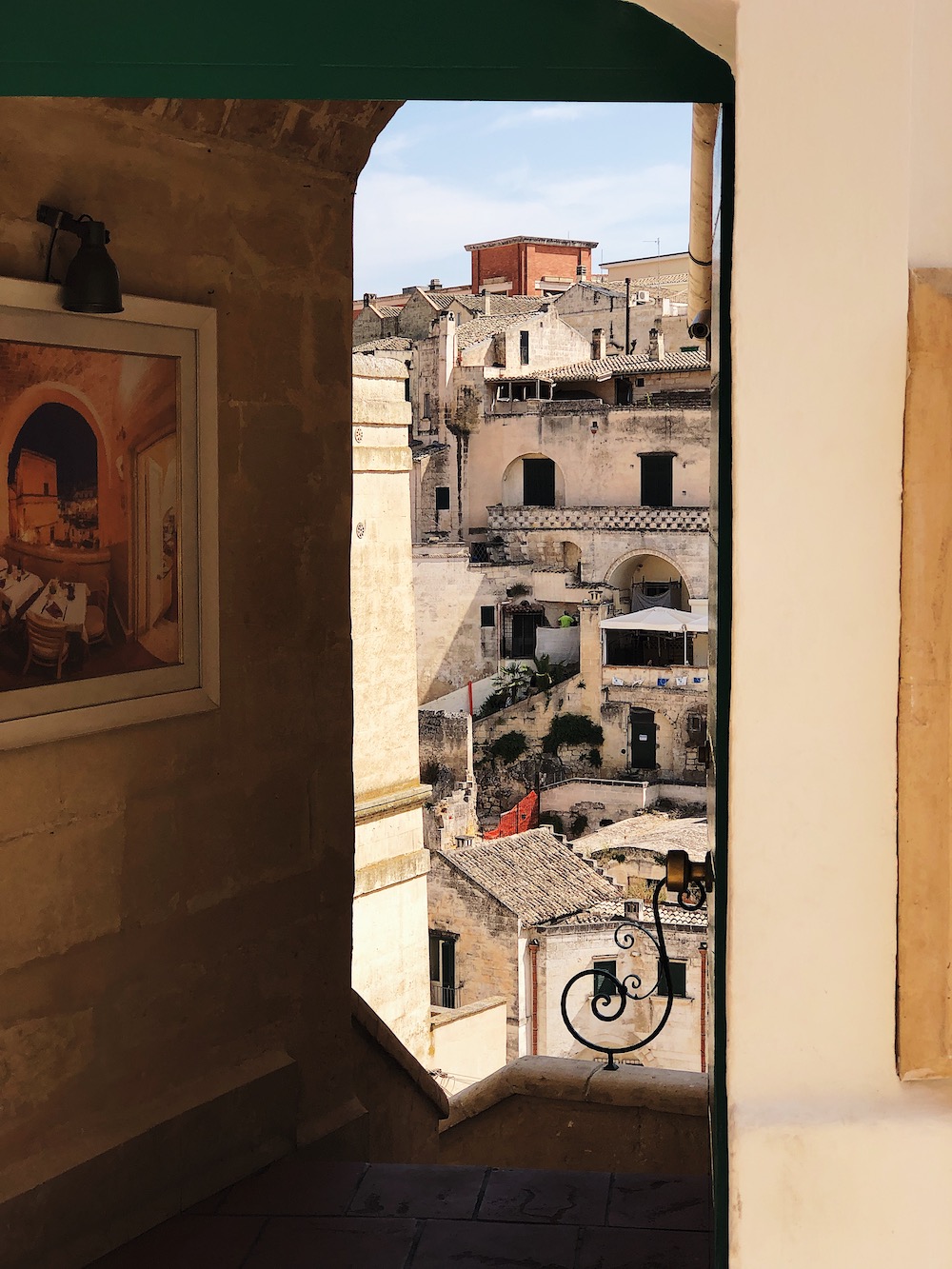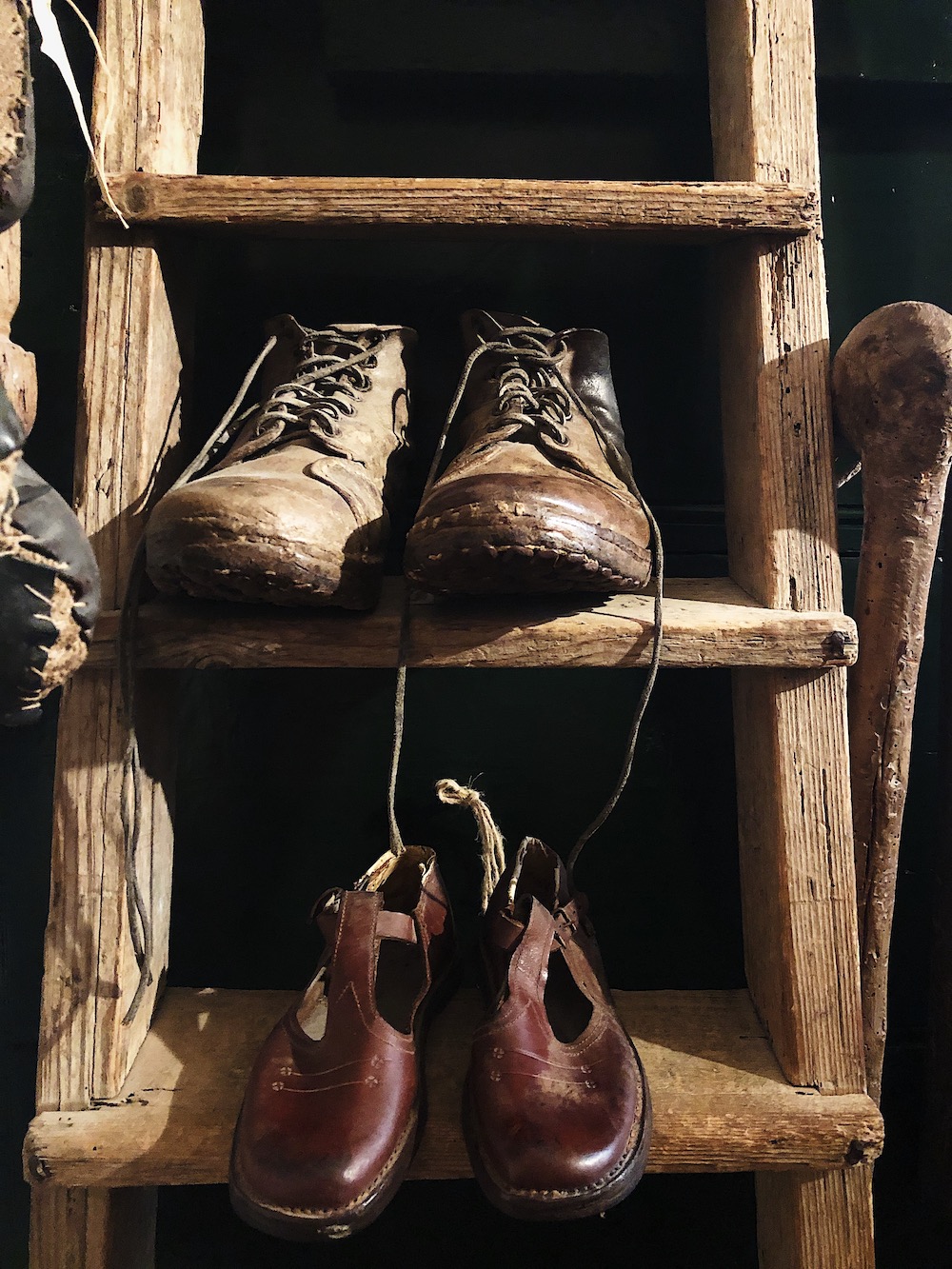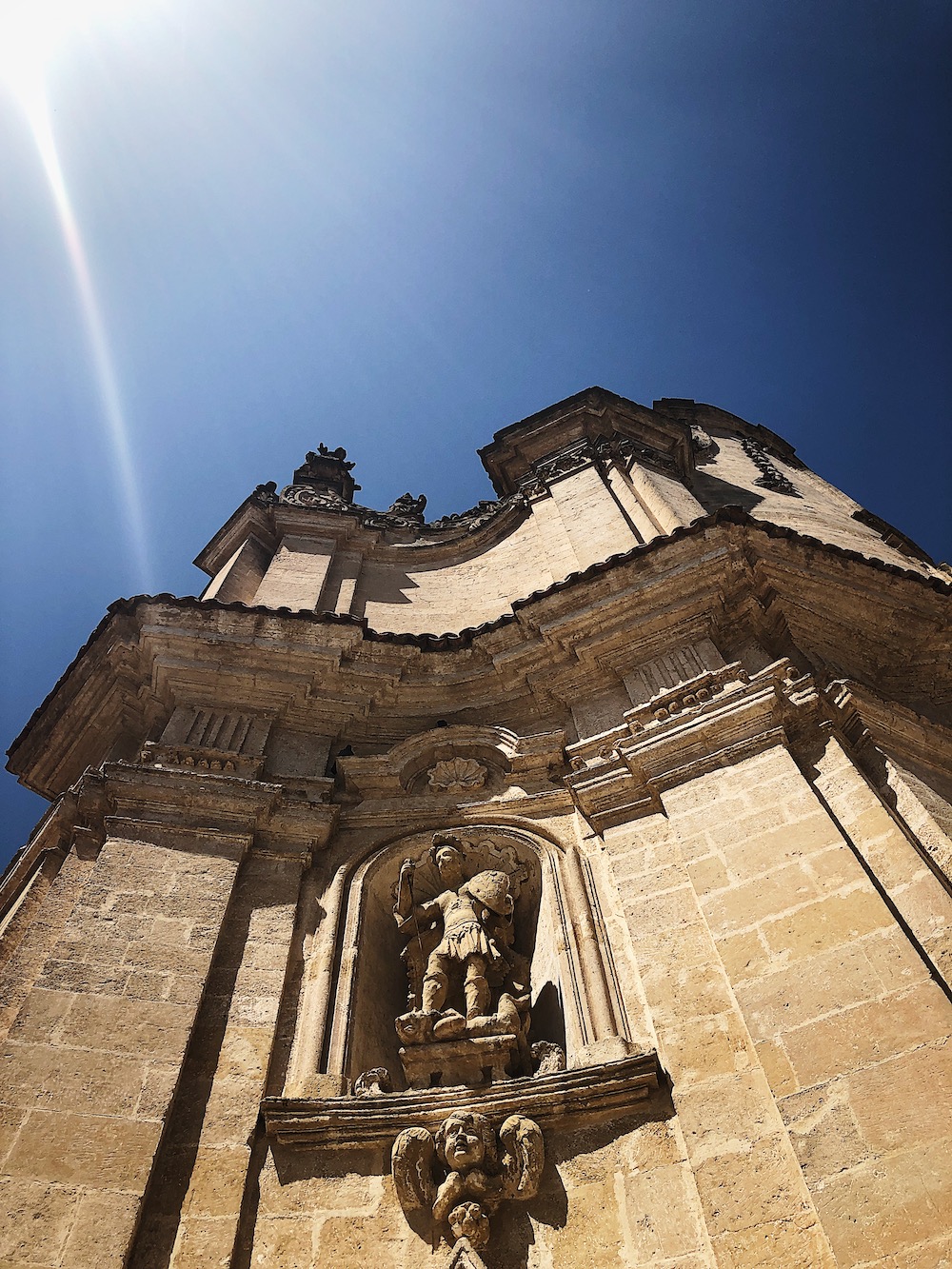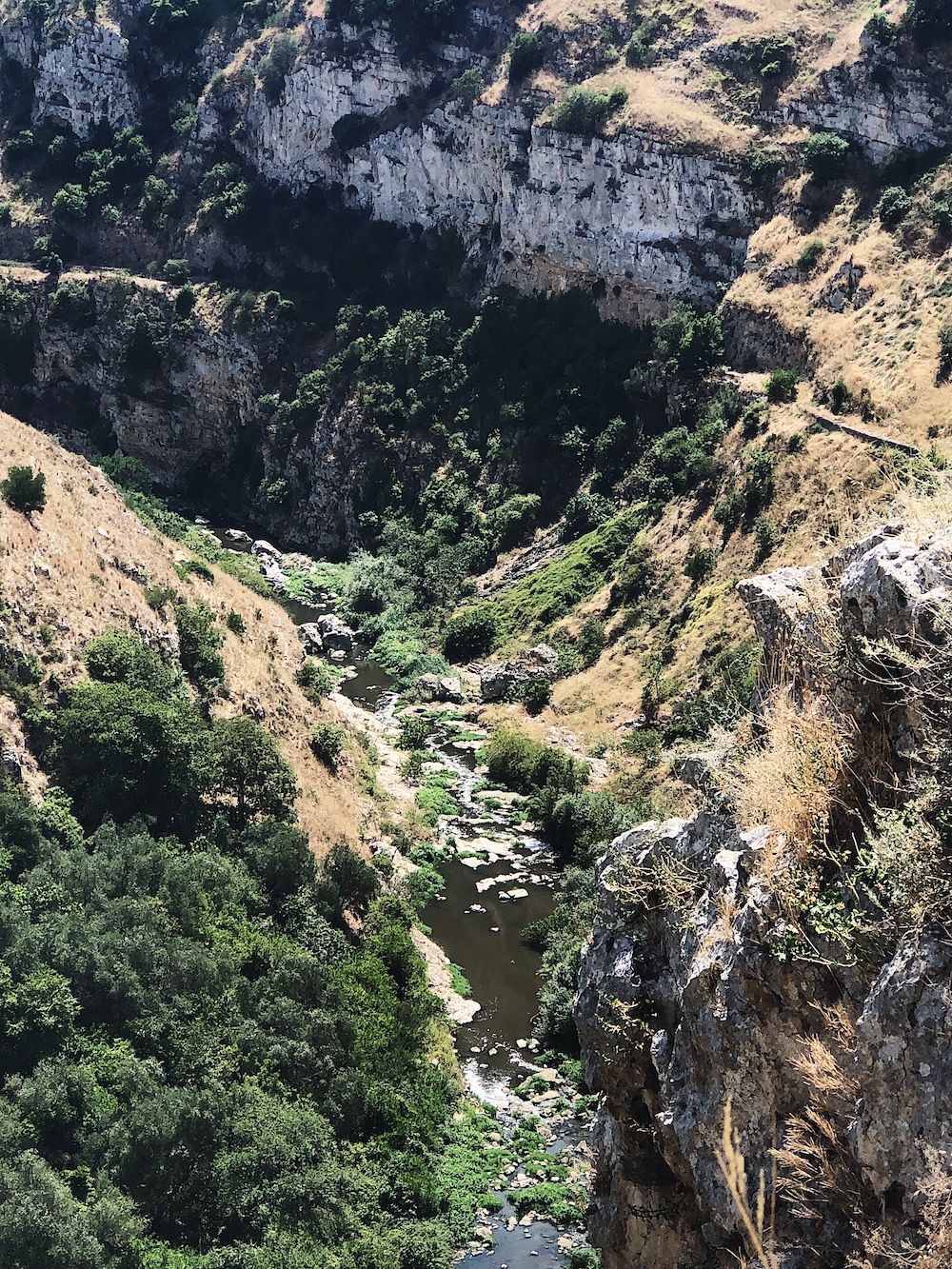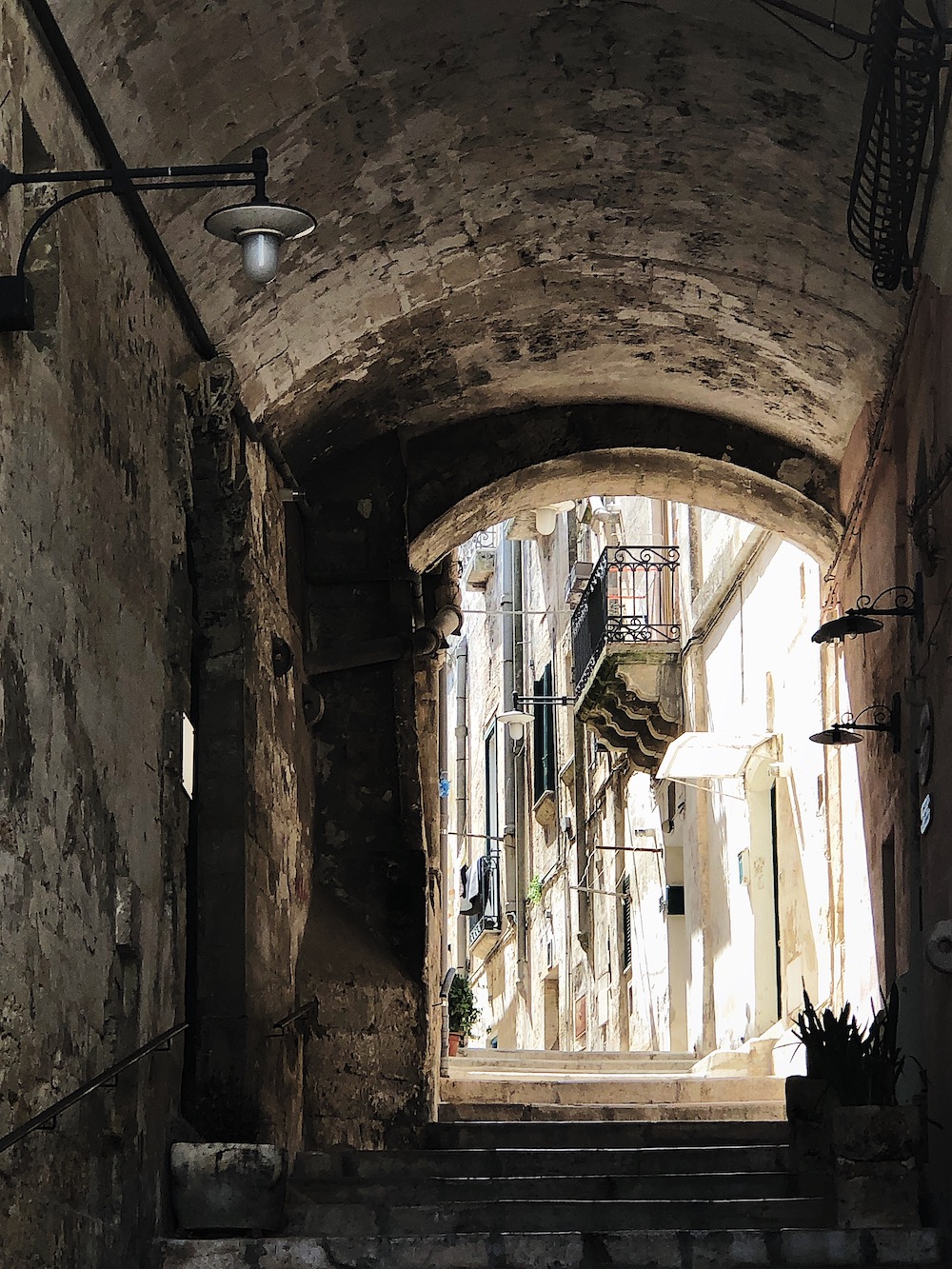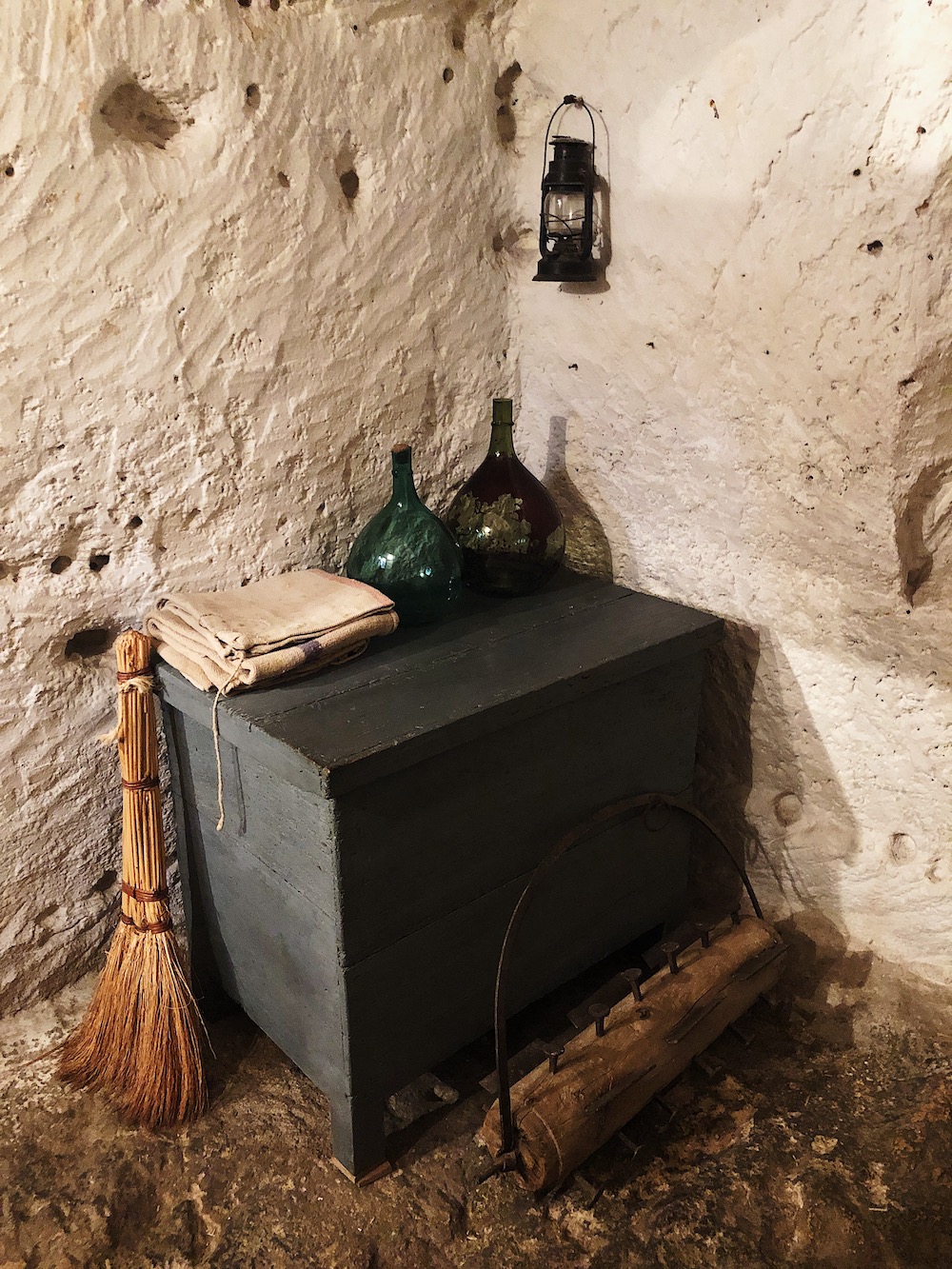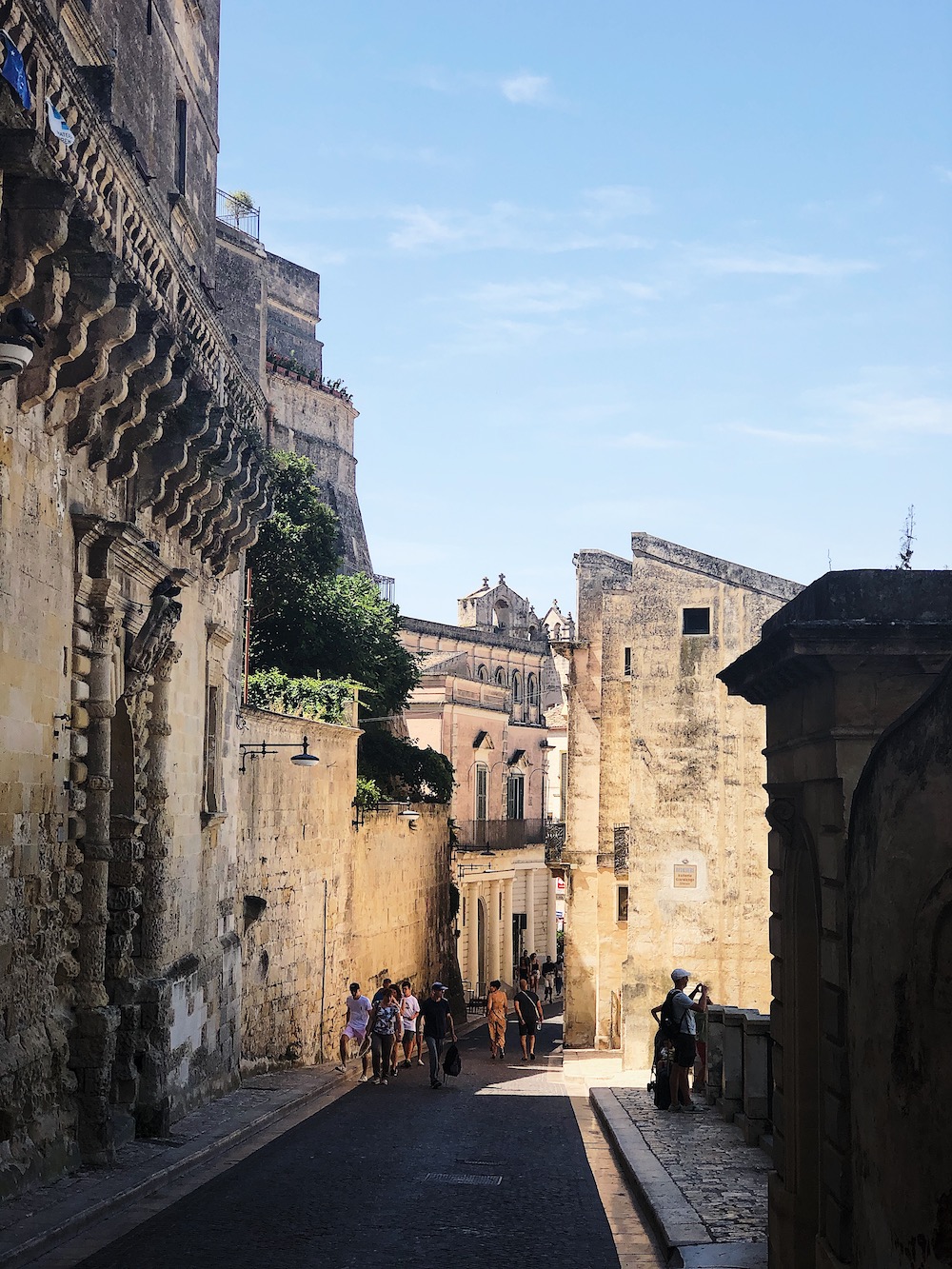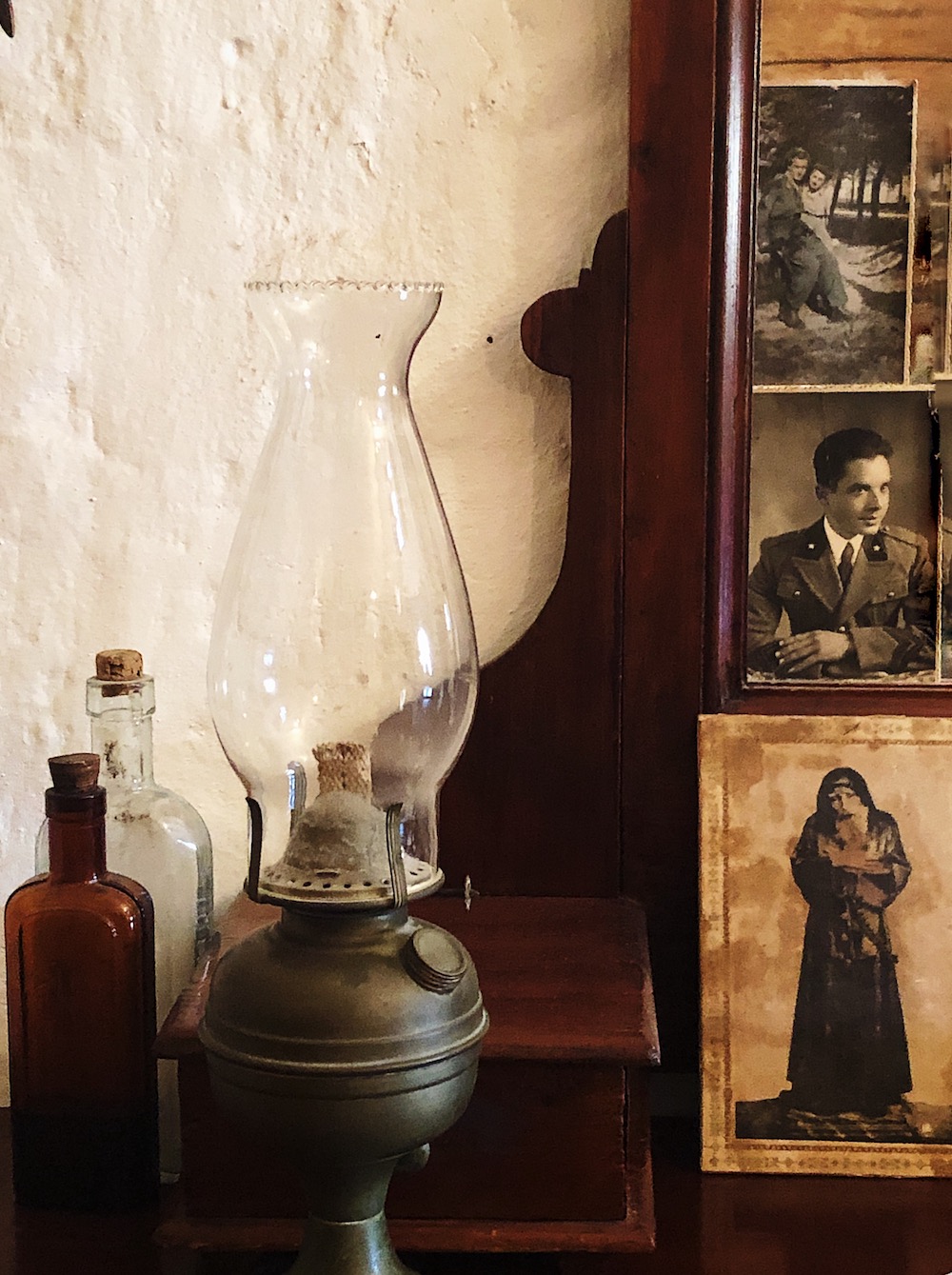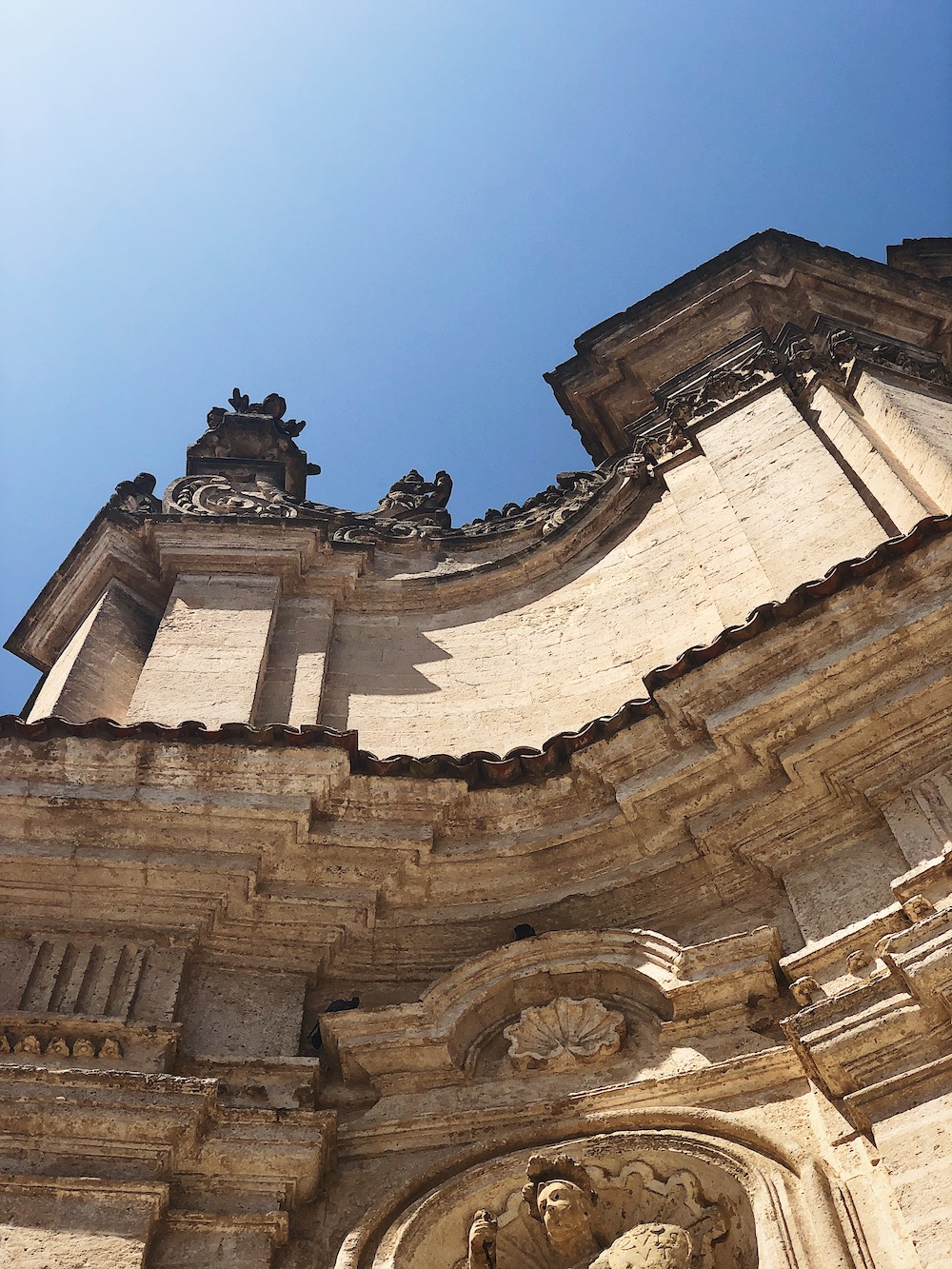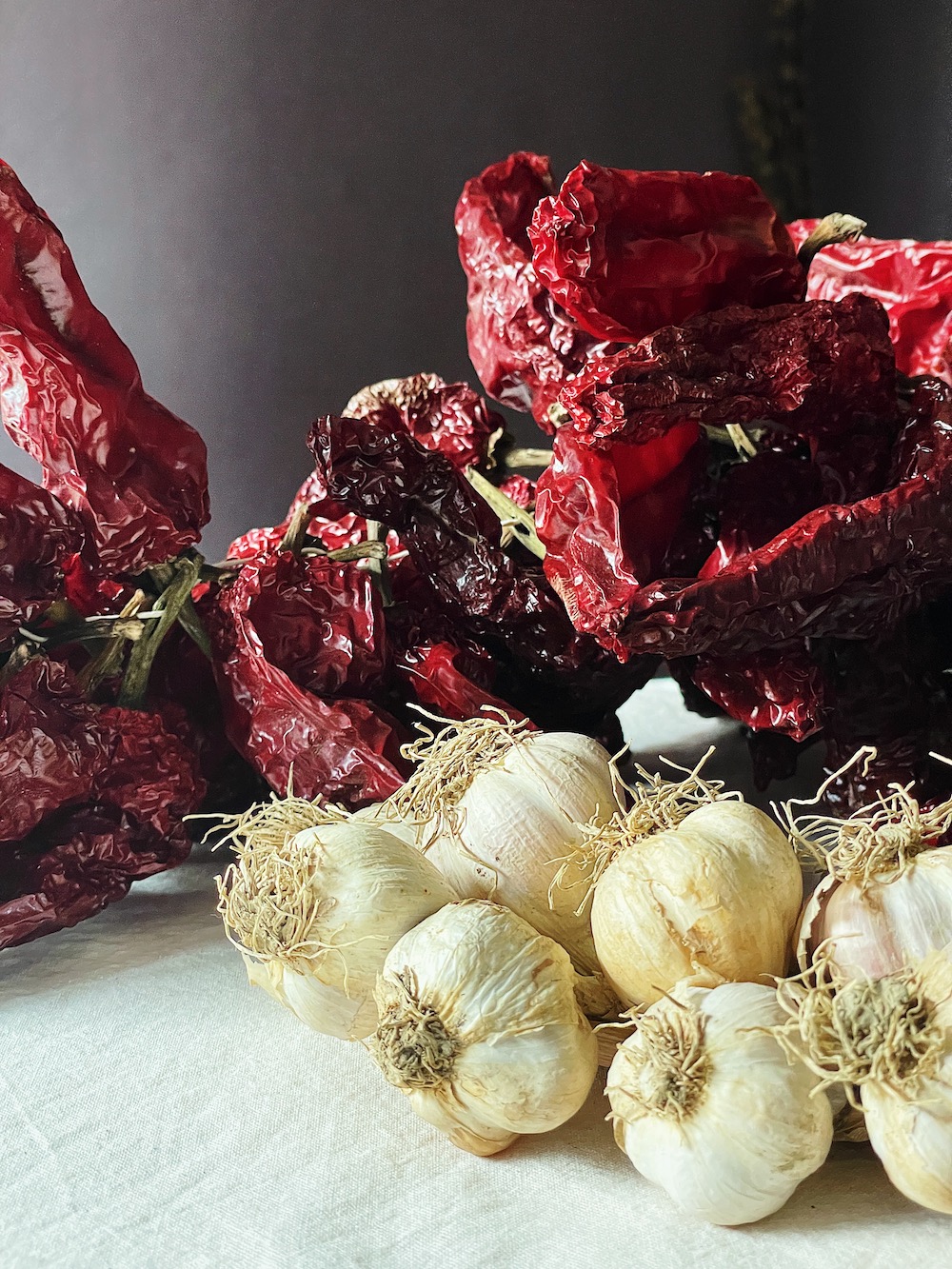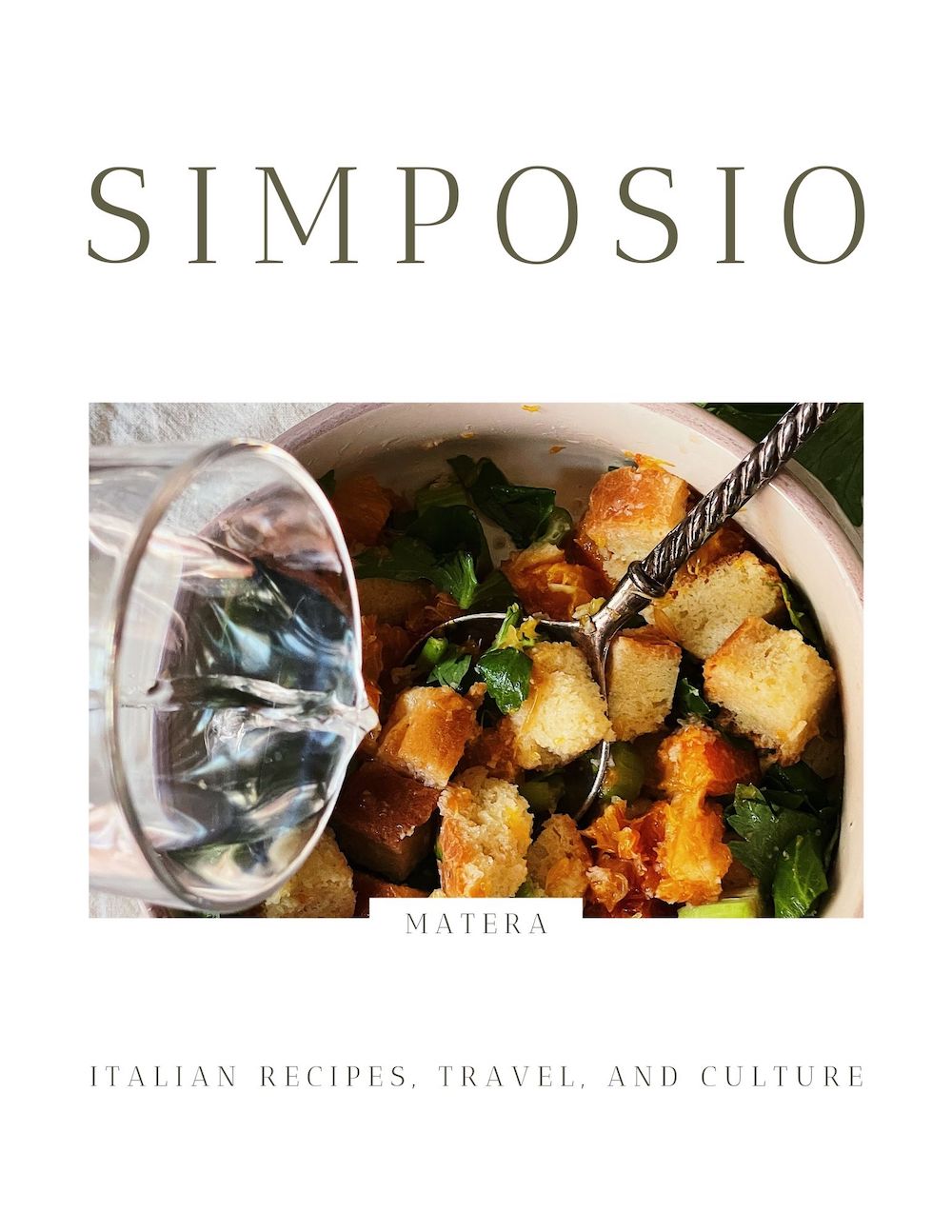Welcome to Matera, Basilicata, the city of Sassi, bread, intimate relationships, shame, traditions, history, delicious recipes, and mysticism.
From Matera's Simposio
The information in this post is all from Matera’s Simposio: a travel cookbook from the Simposio series.
Get your copy to:
- cook authentic Matera recipes;
- learn to repurpose stale bread;
- discover local ingredients and sit around a bonfire to cook and burn stuff;
- make pasta, give it new shapes, and season it with succulent earthy seasonings;
- meet family-owned secular businesses and visit the lab of talented crafters;
- play in the streets, strike, and try to catch red pointy hats;
- go wild with female brigands and ask witches to remove Malocchio;
- celebrate from January to December, even lacerating a sacred cart;
- and more!
It’s going to be fun; it’s going to be intimate; it’s going to be a new, unique Italian experience.
Why visit Matera
The first time I saw Matera, I had forced my husband and my parents-in-law to visit it on a terribly hot August day. Of a year particularly hot, as if it wasn’t enough. I was certain that offering a private guided tour would be enough to atone for my caprice. Or at least distract them from the discomfort. But I was the only one distracted. I was also the only one who had never visited the city. Matera is almost a five-hour drive from Rome but not even an hour from Taranto, their hometown. This means that Luca had been there on more than one school trip. And his parents go regularly.
So yes, I was the only one amused, surprised, and intrigued by the spectacle.
Lucania
The first thing I sensed of Lucania, Matera’s ancient region, was that it was never – or rarely – the scene for great men, knights, noblemen, politicians, etc. This city was – and is – the city of the countrymen, the people, and the folk. There’s an ancestral force, call it survival instinct, that has preserved this state of things. No matter the dominations, the exploited lands, the dry seasons, the disregard, or maybe because of them, Matera and the lands surrounding belong to the people. Little has changed. Little will change. Sure, mass tourism has reached the city. People talk about it, visit it, and bring their money. But coming in last in the list of popular Italian destinations may have had its significant benefits.
A SOUNDTRACK
This is a song (and artist) I discovered while researching for Matera’s Simposio. Play it while reading this post or the cookbook!
VISIT MATERA ASAP
I believe and have occasionally witnessed that coming in last can be highly beneficial. If you are smart enough, you can skip the ferocity of the touristification middle phases or at least preserve your treasures with the minimum loss.
From a privileged, since distant, point of view, in Matera, we have a unique occasion. We can witness the metamorphosis with a deep awareness of what is happening and, hopefully, see how the city will cleverly skip the destructive phases. We can track how the new generations will deal with change. Participate in the rediscovering of their roots. And see what they’ll do with them.
IS MATERA THE OLDEST CITY IN THE WORLD?
Matera is considered the oldest continuously inhabited city in Europe. It is also a UNESCO World Heritage site and, lately, the European Capital of Culture (2019).
MATERA’S HISTORY
The first hominid found it relatively easy to dig into the tuffaceous rocks and settle in the grottos, a perfect shelter from wildlife and atmospheric phenomena: Matera’s Sassi. The Italian word Sassi translates into rocks, but in Matera, it refers to the grotto houses around the ravine created by the river Gravina.
Thanks to its waters, the territory was also greatly fertile, especially for the cultivation of cereals. Homo Sapiens soon discovered it. Magna Grecia followed, and the Roman Empire too. The latter two indeed established on grains huge, florid trade routes. Not by chance, the via Appia runs from Rome to Brindisi (Puglia) and passes by Matera. Commerce was not confined to cereals, though. The land was rich in clay, and the Hellenistic aesthetic had furtherly enriched the local ceramics production born as early as the age of metals. The land was equally rich in woods; therefore, venison was another vital trade.
Following the fall of the Roman Empire and surviving a period of oblivion and degradation, the city was forced to bear a stream of dominations: the Longobards, continuously hazarded by the Saracen and their newly founded (and very near) emirate in Bari. Then the Norman, the Swabians, and the Aragonese with their latifundia organization.
So yes, Matera has been continuously inhabited and has faced an alternation of fat and lean cows. Wealth and poverty. Fame and decay. Neglect and retaliation.
WHY WAS MATERA CALLED THE SHAME OF ITALY: LIFE IN THE SASSI
The first thing everybody wants to see in Matera is the Sassi. Sassi, as mentioned earlier, is the Italian word for rocks. Plural, as Matera’s Sassi are two: two valleys descending towards the stream Gravina‘s gorge.
Until the fifties, Sasso Caveoso was inhabited by the last in the social pyramid: peasants and shepherds. Its name derives from the word “cavea”, referred to the theater-pit shape.
The Barisano, so called because it rose on the street that takes to Bari, was home to artisans, slightly wealthier citizens that could afford to build a house over the grotto, which was used mainly as a storage room.
The two valleys fall from the Civita, a spur, the oldest settlement of Matera, but also, later, the area of the noble palaces.
In 1948, when named by Palmiro Togliatti “the shame of Italy“, the Sassi living conditions were, indeed, dreadful. The once ingenious constructions had become a trap. The population growth and the farming crisis had led to an overuse of the grotto houses. Excavating deeper to amplify the house was the only way to contain the extended families. Up to fifteen people lived in proximity with the farming animals. Bathrooms were nonexistent if not for a chamber pot shared by everyone and placed in the remotest of the excavated rooms. Water supply was limited to rainwater or the one carried daily from the communal cistern or the public fountains. A central brazier – a chimney if you were wealthy – and the same animals were the only heat sources. The only light came from the entrance door.
Humidity levels fostered mold. And the mold colonized most of the walls and ceilings. Together with the animal feces that were treasured inside to ferment and become manure, they were the cause of infections like typhoid and paratyphoid. The garbage was accumulated outside, in corners of the neighborhood: tempting loot for flies and rats. Mortality, predominantly infant, was impressive.
And still, when the state came to the aid, built the new Rioni (neighborhoods), and assigned a modern and equipped house to each family, many held tight to their old home and life before resigning.
MATERA’S REBIRTH
After the government intervention, the Sassi were abandoned. Semi-abandoned to be true. The grottos soon became home to those needing unattended space: the youth. Children played. Teens spooned. And those a little older founded clandestine clubs: associations, drinking circles, poetry reading or musical encounters, etc. Also, the hippies arrived, following the mirage of a wild, free, rudimentary life.
Matera’s primitive beauty, abandoned, was a magnet for intellectuals, the wealthy, and international travelers.
Henri Cartier-Bresson took magnificent pictures!
It was a matter of time before movie directors came. Pier Paolo Pasolini and Roberto Rossellini, among the others, chose Matera for its archaic aesthetics. As did Giuseppe Tornatore, later followed by Mel Gibson.
The Sassi were repopulating: temporary visitors, new residents, and locals returning from forced education and work-searching emigration. Something had perpetually pulsed under the ruins, a beat that slowly and gently called the souls that could and would understand and appreciate. Invited to gather, once again, around a piazza.
Seventy-one years after being named a national shame, the city was proclaimed the European Capital of Culture.
I’ve heard and read many complaints about the intellectual gaps in the city. That it lacks culture or the predisposition toward culture.
But culture is not an opera play in the main piazza, nor a poet or a writer. It is not – at least not only – scholars drinking at the central cafe disputing over local issues. Culture is knowledge sustained by curiosity. It is adding one brick to the other with the fervor of conquering. It is digging to recover what ignorance and oblivion have let be buried under layers and layers of the false myths of modernization and consumerism. It recognizes heritage as a treasure. It acknowledges the true beauty and value of having an identity, of being unique.
And Matera is full of this culture. The payback, the rebirth, the fat cow, will be huge!
WHAT TO EAT IN MATERA
- Italy bears about fifty varieties of honey and is the first in the world for the number of monofloral. Fifteen varieties are present in Lucania, and two are the pride of Matera’s province: Sulla and thyme honey.
- Italy also has more than two hundred types of bread. One of the most famous is the bread from Matera. Crunchier outside and fuller inside. It has an IGT denomination, “Pane di Matera”. Don’t miss a visit to a local “forno”, bakery!
- One should not leave Matera without tasting the Caciocavallo Podolico Stagionato in Grotta. A cow-milk cheese with a pear shape, aged inside grottos for a minimum of one month and up to five years, gaining, of course, unique sensorial notes.
- Matera also has an unexpected and little-known to the masses gem: white truffle.
- To fill the gastronomic panorama, the city has a DOC wine: Primitivo di Matera. Competitor of the more known Primitivo di Manduria (Puglia).
- Not specifically from Matera, but so largely used they’re impossible to ignore, come the Peperoni Cruschi: horn-shaped dried bell peppers used in all the kitchens of Basilicata.
- And then there’s pasta: Orecchiette and Cavatelli shared with Puglia; Taglioline, also sounding and similar to Tagliolini, are regional; Scorze Di Mandorla, “almond zest”, are specifically of Matera.
MATERA RECIPES
Here’s the list of recipes you’ll find in Matera’s Simposio; it may also be a checklist of delights to look for when visiting Matera!
- Cialedda Fredda: a bread, oniony salad
- Cialedda Calda: warm and cooked bread salad
- Orange Salad
- Polpette Di Pane: bread balls aka meatless meatballs
- Fedda Rossa: the local bruschetta
- Acquasale Dei Pastori: an ancient bread dish to recover stale leftovers
- Honey Focaccia
- Matera’s Cavatelli, Scorze Di Mandorla, and Taglioline
- Pasta E Lenticchie: pasta with lentils
- Pasta E Cicerchie: pasta and grass peas
- Crapiata: a mixed legumes and cereals soup
- Inganna Mariti: a super fast breadcrumbs and onions pasta dish
- Patate Raganate: a very tasty potato casserole
- Wild Asparagus Frittata
- Bbascanesche: very ancient grape sweets
- Agnello In Pignatta: slowly cooked lamb
- Baccalà A Ciauredda: oniony salt cod
- Tarallo Dell’Immacolata: a bagel baked for Christmas
- Matera’s Ragù
- Strazzate Cookies
- Cicirata: the Boxing Day dish from the past
- Lagane E Ceci: homemade pasta with chickpeas
MATERA’S SIMPOSIO
That’s it, but of course, there’s much more. Get your Matera Simposio here.
Enjoy Matera, enjoy Italy!
Claudia

